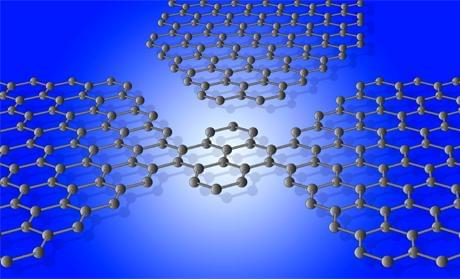Popocatépetl, Mexico’s second-tallest active volcano, has been spewing ash and smoke for weeks, and authorities warn evacuations could follow.
For generations, physicists were sure the laws of physics were perfectly symmetric. Until they weren’t.
Symmetry is a tidy and attractive idea that falls apart in our untidy universe. Indeed, since the 1960s, some kind of broken symmetry has been required to explain why there is more matter than antimatter in the universe—why, that is, that any of this exists at all.
But pinning down the source behind this existential symmetry violation, even finding proof of it, has been impossible.
Move over, Cortana. Copilot is the new assistant in Windows town.
Microsoft is adding a Copilot AI assistant to Windows 11. Much like the Copilot sidebars we’ve seen in Edge, Office apps, and even GitHub, Windows Copilot will be integrated directly into Windows 11 and available to open and use from the taskbar across all apps and programs.
“Once open, the Windows Copilot side bar stays consistent across your apps, programs, and windows, always available to act as your personal assistant,” explains Panos Panay, Microsoft’s head of Windows and devices. “It makes every user a power user, helping you take action, customize your settings, and seamlessly connect across your favorite apps.
Windows Copilot takes over Cortana’s place on the taskbar.
With Spotify’s AI DJ, the company trained an AI on a real person’s voice — that of its head of Cultural Partnerships and podcast host, Xavier “X” Jernigan. Now, the streamer may turn that same technology to advertising, it seems. According to statements made by The Ringer founder Bill Simmons, the streaming service is developing AI technology that will be able to use a podcast host’s voice to make host-read ads — without the host actually having to read and record the ad copy.
Simmons made the statements on a recent episode of “The Bill Simmons Podcast,” saying, “There is going to be a way to use my voice for the ads. You have to obviously give the approval for the voice, but it opens up, from an advertising standpoint, all these different great possibilities for you.”
He said these ads could open up new opportunities for podcasters because they could geo-target ads — like tickets for a local event in the listener’s city — or even create ads in different languages, with the host’s permission.
In today’s column, I will be examining how the latest in generative AI is stoking medical malpractice concerns for medical doctors, doing so in perhaps unexpected or surprising ways. We all pretty much realize that medical doctors need to know about medicine, and it turns out that they also need to know about or at least be sufficiently aware of the intertwining of AI and the law during their illustrious medical careers.
Here’s why.
Is generative AI a blessing or a curse when it comes to medical doctors and the role of medical malpractice lawsuits.
The Chinese delivery giant Meituan flies drones between skyscrapers to kiosks around the city. I went to see how it works.
My iced tea arrived from the sky.
They could help lead to speech apps for many more languages than exist now.
Meta has built AI models that can recognize and produce speech for more than 1,000 languages—a tenfold increase on what’s currently available. It’s a significant step toward preserving languages that are at risk of disappearing, the company says.
Meta is releasing its models to the public via the code hosting service GitHub. It claims that making them open source will help developers working in different languages to build new speech applications—like messaging services that understand everyone, or virtual-reality systems that can be used in any language.
Utilizing the computational prowess of one of the world’s top supercomputers, scientists have achieved the most accurate simulation to date of objects consisting of tens of millions of atoms, thanks to the integration of artificial intelligence (AI) techniques. Previous simulations that delved into the behavior and interaction of atoms were limited to small molecules due to the immense computational power required. Although there are methods to simulate larger atom counts over time, they heavily rely on approximations and fail to provide intricate molecular details.
A team led by Boris Kozinsky at Harvard University has developed a tool named Allegro, which leverages AI to perform precise simulations of systems containing tens of millions of atoms. To demonstrate the capabilities of their approach, Kozinsky and his team employed Perlmutter, the world’s eighth most powerful supercomputer, to simulate the complex interplay of 44 million atoms constituting the protein shell of HIV. Additionally, they successfully simulated other vital biological molecules such as cellulose, a protein associated with haemophilia, and a widespread tobacco plant virus.
Kozinsky emphasizes that this methodology can accurately simulate any atom-based object with exceptional precision and scalability. The system’s applications extend beyond biology and can be applied to a wide array of materials science problems, including investigations into batteries, catalysis, and semiconductors.
Enabled by a constellation of low Earth orbit satellites, Starlink will provide fast, reliable internet to populations with little or no connectivity, including those in rural communities and places where existing services are too expensive or unreliable.
😀
However, it is a notable watch thanks to its unusual blood glucose feature, which should be of particularly interest to those with diabetes and pre-diabetes.
Huawei’s consumer CEO Yu Chengdong describes it as the result of “high blood sugar risk assessment research,” on Chinese social network Weibo.
While I’m yet to see a demo of the Huawei Watch 4 in action, Huawei’s promotional video suggests an alert will pop up when the watch thinks the wearer is at risk of lapsing into a high blood sugar state.









